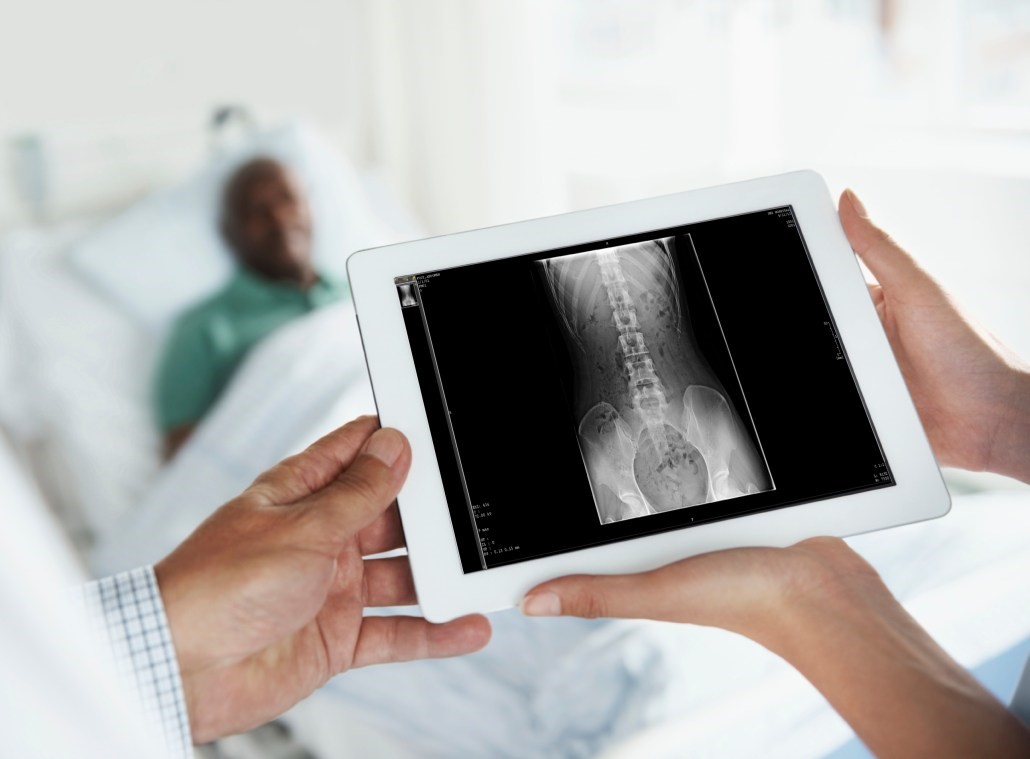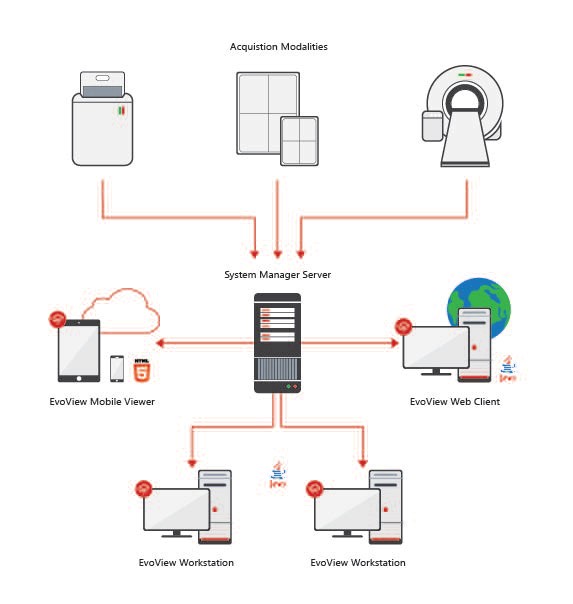Del Medical EvoView PACS
Product Description
EvoView PACS is a diagnostic image solution comprised of technologies and capabilities to provide professionals with an intuitive, powerful platform aimed to improve workflow efficiency and patient care in today's healthcare environment.
Limitless Possibilities
Users have more intricate needs toward mobile data access with a multitude of devices at their fingertips, while Healthcare IT aims to maintain a controlled and relatively centralized environment. EvoView PACS gives users what they want, when, where, and how they want it! EvoView can be installed on ANY designated workstation, or access via your favorite web browser while imploring user-level customization and defaults. With EvoView, there are no limits. No Matter how users access it, customize it, etc. EvoView has them covered, whenever and however they choose.
Flexible Accessibility
The Diagnostic Viewing components are highly customizable at the user and administrative levels for the ultimate needs of any user, group, or department. EvoView can be locally installed on any Windows or MAC operating systems or can be accessed by any Windows-based internet browser such as Internet Explorer, Chrome, and Firefox. EvoView also provides easy access from any PC or mobile device such as an iPad (or iPhone), Android (tablet or phone), and more using zero-footprint technology without the need for any specific App.
Building a Better Diagnosis
EvoView also features many useful tools and methods for sharing image and result information. This includes built-in integration methods with other pertinent healthcare components like RIS or EMR and an available Referring Physician Portal. Users can share access to images with any other user or outside physicians as needed while maintaining a fully secure environment.
Manage with Confidence
EvoView SystemManager is the heart of EvoView PACS allowing PACS Administrators and IT Departments to maintain the entire PACS system from a central web-based interface. SystemManager provides the ability to manage users and settings, image data, storage and routing, system integrations, HL7 communications, system backups, quality control audits and features, and other automated functions.
Limitless Possibilities
Users have more intricate needs toward mobile data access with a multitude of devices at their fingertips, while Healthcare IT aims to maintain a controlled and relatively centralized environment. EvoView PACS gives users what they want, when, where, and how they want it! EvoView can be installed on ANY designated workstation, or access via your favorite web browser while imploring user-level customization and defaults. With EvoView, there are no limits. No Matter how users access it, customize it, etc. EvoView has them covered, whenever and however they choose.
Flexible Accessibility
The Diagnostic Viewing components are highly customizable at the user and administrative levels for the ultimate needs of any user, group, or department. EvoView can be locally installed on any Windows or MAC operating systems or can be accessed by any Windows-based internet browser such as Internet Explorer, Chrome, and Firefox. EvoView also provides easy access from any PC or mobile device such as an iPad (or iPhone), Android (tablet or phone), and more using zero-footprint technology without the need for any specific App.
Building a Better Diagnosis
EvoView also features many useful tools and methods for sharing image and result information. This includes built-in integration methods with other pertinent healthcare components like RIS or EMR and an available Referring Physician Portal. Users can share access to images with any other user or outside physicians as needed while maintaining a fully secure environment.
Manage with Confidence
EvoView SystemManager is the heart of EvoView PACS allowing PACS Administrators and IT Departments to maintain the entire PACS system from a central web-based interface. SystemManager provides the ability to manage users and settings, image data, storage and routing, system integrations, HL7 communications, system backups, quality control audits and features, and other automated functions.
Specifications
Hardware Minimum Requirements
- Intel or AMD equivalent Xeon 2.0 GHz or Core i5 3.0 GHz or better
- 200 GB minimum available hard disk space
- Data storage space sized according to the facility's imaging volume
- Microsoft Windows Server 2012 or 2016 Standard 64-bit
- Network Connectivity
- Microsoft Windows 10 Pro 64-bit or Windows 7 SP1 32/64-bit
- Network connection for access to the service

